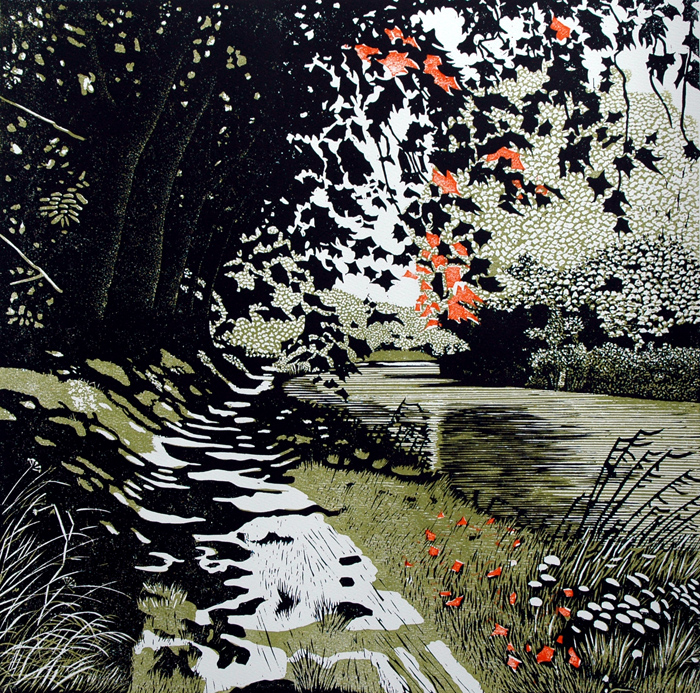
In this section you can see how I prepare the blocks of lino, what sort of lino is used and to what effect. Also you’ll see when making multi colour prints, how the texture of different sorts of lino in combination with multiply (multi plex) wooden panels can be employed.
Linoleum has been around since the late 1800’s. It was used for floor covering and to protect working surfaces like laboratory bench tops.
Frederick Walton developed the material after trials with mixing ingredients, combined with oxidising linseed oil, until he ended up with a mixture of oxidised oil, cork dust, and gum or resin on a jute backing.
He called it Linoleum, which he derived from the Latin words “linum” (flax) and “oleum” (oil). His initial idea was to use earlier concoctions for the water-proofing of fabrics, but it ended up being used as a floor covering. It was soon found that it could easily be carved and used for relief printing, and as such, was adopted in art classes.
It became popular with leading artists in Europe and the United States in the early 1900’s. The medium was also used to create wall paper by the American artist, Walter Anderson, in the 1940’s.
Henri Matisse and Pablo Picasso were just two artists who started using lino for printing. Apparently, Picasso acquired a good stock of flooring lino recovered from demolished buildings. He is also credited with starting the technique of “reduction linocuts”, where, after each print run, more lino is cut away and the block is inked with a different colour each cutting to achieve the final print.
Images copyright © to ACW ten Broek


Woodcuts
wouter@acwwoodcuts.com
42 Rue Grand'Rue
11240 Belvèze du Razès
France +33 (0)4 30 07 30 80